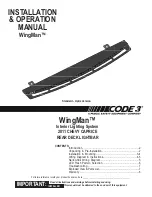
The speed limit no longer applies
:
.
i
The unit for the speed limit (km/h or mph)
depends on the country in which you are driv-
ing. It is generally neither shown on the traffic
sign nor on the instrument cluster but must be
taken into account when observing the max-
imum permitted speed.
No entry (wrong-way warning)
If no entry signs are passed, a warning message
is displayed in the instrument cluster should
Traffic Sign Assist detect that you are driving in
the wrong direction. You will then also hear a
warning tone. You should immediately check
your direction of travel in order to avoid danger
to yourself and other road users.
i
This function is not available in all countries.
Lane Tracking package
General notes
The Lane Tracking package consists of Blind
Spot Assist (
Y
page 200) and Lane Keeping
Assist (
Y
page 202).
Blind Spot Assist
General notes
Blind Spot Assist uses a radar sensor system to
monitor the areas on both sides of your vehicle.
It supports you from speeds of 30 km/h. A
warning display in the exterior mirrors draws
your attention to vehicles detected in the moni-
tored area. If you then switch on the corre-
sponding turn signal to change lanes, you will
also receive an optical and audible collision
warning. For monitoring, Blind Spot Assist uses
sensors in the rear bumper.
Important safety notes
G
WARNING
Blind Spot Assist does not react to vehicles:
R
overtaken too closely on the side, placing
them in the blind spot area
R
when the difference in the speed of
approach and overtaking is too great
As a result, Blind Spot Assist cannot warn
drivers in these situations. There is a risk of an
accident.
Always pay careful attention to the traffic sit-
uation and maintain a safe distance at the side
of the vehicle.
Blind Spot Assist is only an aid. It may fail to
detect some vehicles and is no substitute for
attentive driving. Always ensure that there is
sufficient distance to the side for other road
users and obstacles.
Monitoring range of the sensors
In particular, the detection of obstacles can be
impaired in the case of:
R
dirt on the sensors or obscured sensors
R
poor visibility, e.g. due to fog, heavy rain,
snow or spray
R
narrow vehicles, e.g. motorcycles or bicycles
R
very wide lanes
R
narrow lanes
R
vehicles not driving in the middle of their lane
R
barriers or other road boundaries
Vehicles in the monitoring range are then not
indicated.
200
Driving systems
Driving
and
parking
















































